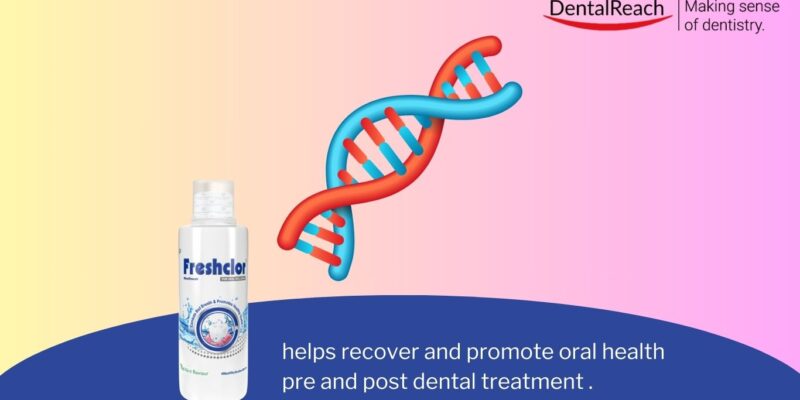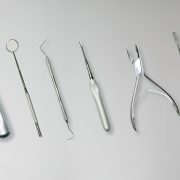Recent advances in genetic research have revolutionized our understanding of oral health conditions, and how our genetic makeup influences susceptibility to periodontal disease, oral cancer development, and enamel defects. This emerging field represents a paradigm shift in dentistry, moving from purely symptomatic treatment to potential predictive, preventive, and personalized approaches.
Geneticists have identified specific genetic markers associated with aggressive periodontitis, discovered gene variants that affect enamel formation, and mapped genetic pathways that increase oral cancer risk. These discoveries are gradually transforming clinical practice, with dentists increasingly considering genetic factors when developing treatment plans and preventive strategies for patients with family histories of specific oral conditions.
The Genetic Foundation of Periodontal Disease
Periodontitis, a complex multifactorial disease affecting the supporting structures of teeth, has strong genetic components that influence an individual’s susceptibility, severity, and response to treatment. Research has demonstrated that between 30% and 50% of the risk for periodontitis can be attributed to genetic factors. This genetic predisposition helps explain why some individuals with poor oral hygiene remain relatively free of periodontal disease while others develop severe manifestations despite rigorous oral care routines.
Multiple gene polymorphisms have been identified as risk factors for periodontitis. Interleukin-1 (IL-1) gene cluster polymorphisms are among the most extensively studied, with certain variants associated with increased production of inflammatory cytokines and higher susceptibility to periodontal breakdown. These genetic variations affect the body’s inflammatory response to oral bacteria, potentially leading to excessive inflammation and subsequent tissue destruction characteristic of periodontitis. Additionally, genes encoding for tumor necrosis factor-alpha (TNF-α), interleukin-6 (IL-6), and various matrix metalloproteinases have been implicated in periodontitis risk and progression.
Aggressive periodontitis, which affects younger individuals and progresses rapidly, shows particularly strong genetic influences. Family studies have revealed that aggressive periodontitis often follows patterns consistent with genetic inheritance, with some forms showing features of autosomal dominant transmission with reduced penetrance.
Specific Genetic Markers and Periodontitis
Recent genome-wide association studies (GWAS) have identified numerous genetic loci associated with periodontitis risk. One significant discovery involves the glycosyltransferase 6 domain containing 1 (GLT6D1) gene, which has been consistently linked to aggressive periodontitis. Similarly, variations in the cyclooxygenase-2 (COX-2) and Fc-gamma receptor (FcγR) genes have been associated with altered inflammatory responses and increased periodontitis risk in various populations.
Epigenetic modifications-changes that affect gene expression without altering the underlying DNA sequence-may explain how environmental factors like smoking, stress, and diet influence periodontal disease progression. DNA methylation patterns, histone modifications, and microRNA expression can all be altered by environmental exposures, potentially leading to dysregulated immune responses and increased susceptibility to periodontitis.
Researchers have also identified rare genetic disorders that manifest with severe periodontal conditions, such as Papillon-Lefèvre syndrome, which is caused by mutations in the cathepsin C gene and results in premature tooth loss due to rapid periodontal destruction. These monogenic conditions, while rare, provide valuable insights into the biological mechanisms underlying periodontal health and disease. By studying these genetic disorders, scientists can better understand the fundamental processes that maintain periodontal homeostasis and identify potential targets for therapeutic intervention.
Oral Cancer: Genetic Pathways and Risk Factors
Oral squamous cell carcinoma (OSCC), the most common form of oral cancer, develops through a complex process involving multiple genetic alterations and environmental influences. The genetic basis of oral cancer involves both hereditary factors and acquired somatic mutations that accumulate over time in response to carcinogens. Understanding these genetic mechanisms has significant implications for risk assessment, early detection, prevention strategies, and treatment planning for patients with or at risk for oral malignancies.
Several oncogenes and tumor suppressor genes have been implicated in oral cancer development. The TP53 gene, which encodes the tumor suppressor protein p53, is frequently mutated in oral cancers, with alterations detected in approximately 50-80% of OSCC cases. These mutations disrupt p53’s crucial role in regulating cell cycle arrest, DNA repair, and apoptosis, allowing damaged cells to proliferate unchecked. Similarly, mutations in the CDKN2A gene, which encodes the p16 protein involved in cell cycle regulation, are common in oral cancers and often occur early in carcinogenesis.
Hereditary Risk and Environmental Interactions
Although most oral cancers develop sporadically, certain inherited genetic syndromes significantly increase oral cancer risk. Fanconi anemia, characterized by mutations in DNA repair genes, confers a 500-700-fold increased risk of oral cancer compared to the general population. Similarly, individuals with Li-Fraumeni syndrome (inherited TP53 mutations) and dyskeratosis congenita face substantially elevated oral cancer risks. These hereditary conditions highlight the critical role of DNA repair and maintenance genes in preventing oral carcinogenesis.
The interaction between genetic predisposition and environmental exposures exemplifies the concept of gene-environment interactions in oral cancer development. Polymorphisms in genes encoding xenobiotic-metabolizing enzymes, such as cytochrome P450 enzymes and glutathione S-transferases, can modify an individual’s susceptibility to tobacco and alcohol-related carcinogenesis. For example, certain variants of alcohol dehydrogenase (ADH) and aldehyde dehydrogenase (ALDH) genes affect the metabolism of alcohol into acetaldehyde-a potent carcinogen-potentially explaining why some heavy drinkers develop oral cancer while others do not.
Human papillomavirus (HPV) infection, particularly HPV-16, has emerged as a significant risk factor for oropharyngeal cancers. Interestingly, HPV-positive tumors typically display distinct genetic profiles compared to those associated with traditional risk factors like tobacco and alcohol. HPV-positive tumors generally contain fewer mutations overall but show characteristic alterations in cell cycle regulation, with relatively intact TP53 function compared to HPV-negative tumors. This genetic distinction partly explains the improved prognosis observed in patients with HPV-positive oropharyngeal cancers.
Genetic Determinants of Dental Enamel Development and Defects
Dental enamel, the hardest tissue in the human body, forms through a highly regulated process called amelogenesis, which is orchestrated by a complex network of genes. Mutations in these genes can lead to various hereditary enamel defects, collectively known as amelogenesis imperfecta (AI). Understanding the genetic basis of enamel formation provides insights into both developmental dental anomalies and potential approaches to enamel regeneration or repair.
The enamel matrix proteins-amelogenin, ameloblastin, enamelin, and tuftelin-play essential roles during different stages of enamel formation. The amelogenin gene (AMELX), located on the X chromosome, encodes the most abundant protein in developing enamel matrix, constituting approximately 90% of the organic material. Mutations in AMELX result in X-linked forms of amelogenesis imperfecta, characterized by hypoplastic or hypomineralized enamel.
Other genes critical for enamel development include ENAM (enamelin), AMBN (ameloblastin), MMP20 (matrix metalloproteinase-20), and KLK4 (kallikrein-related peptidase 4). These genes encode proteins involved in various aspects of enamel matrix secretion, organization, and maturation. Mutations in these genes result in different forms of AI with varying patterns of inheritance and clinical presentations. For example, ENAM mutations typically cause autosomal dominant AI with localized pitting or horizontal grooves in the enamel, while MMP20 mutations lead to autosomal recessive AI with hypomaturation defects.
Beyond Amelogenesis Imperfecta: Broader Genetic Influences on Enamel
Genetic factors also influence individual susceptibility to common dental conditions like dental caries (tooth decay). Genes affecting enamel formation, saliva composition, taste preferences, and immune responses all potentially contribute to caries risk. For instance, variations in genes encoding taste receptors may influence dietary preferences for carbohydrates, indirectly affecting caries risk through behavioral pathways.
Recent research has identified associations between specific gene variants and caries susceptibility. Polymorphisms in genes encoding salivary proteins, such as proline-rich proteins (PRPs) and mucins, can affect the protective properties of saliva against acid challenges. Similarly, variations in genes involved in enamel mineralization and crystallization may result in structural differences that affect enamel solubility and resistance to acid demineralization. These genetic influences help explain why some individuals remain relatively caries-free despite similar dietary and hygiene habits to those who develop numerous carious lesions.
Environmental factors interact with genetic predispositions to determine the actual manifestation of enamel defects and caries. For example, fluoride exposure during tooth development can modify the expression of genetic susceptibility to enamel defects. This gene-environment interaction exemplifies how genetic information can inform personalized preventive strategies.
Clinical Applications: What Dentists Need to Know
The growing understanding of genetic influences on oral health is gradually transforming dental practice, creating new opportunities for risk assessment, early intervention, and personalized treatment approaches. Forward-thinking dental practitioners are increasingly incorporating genetic considerations into their clinical decision-making, particularly when managing patients with family histories of severe periodontal disease, early-onset caries, or hereditary enamel defects. This integration of genetics into dental practice represents an evolution toward more personalized and predictive oral healthcare.
Commercial genetic tests for periodontal disease susceptibility are already available, although their clinical utility remains a subject of ongoing debate among dental professionals. These tests typically evaluate polymorphisms in inflammatory genes like IL-1, with the goal of identifying patients who might benefit from more aggressive preventive interventions or more frequent maintenance appointments. While the scientific basis for these tests continues to evolve, they represent an initial step toward incorporating genetic information into routine dental care. Dentists must understand both the potential benefits and limitations of such tests to counsel patients appropriately.
For patients with suspected hereditary conditions affecting oral health, referral for comprehensive genetic evaluation may be warranted. Conditions like amelogenesis imperfecta, dentinogenesis imperfecta, and certain syndromic forms of periodontal disease can benefit from definitive genetic diagnosis, which may influence treatment planning and family counseling. Increasingly, dentists need basic competency in recognizing patterns suggestive of genetic conditions and understanding the appropriate referral pathways to genetic specialists. This interdisciplinary approach ensures that patients receive comprehensive care addressing both the dental manifestations and any associated systemic implications.
Implementing Genetic Knowledge in Dental Practice
Translating genetic research into clinical applications requires dentists to develop new competencies and practice paradigms. A comprehensive medical and family history remains fundamental to identifying patients who might benefit from genetic considerations in their dental care. Dentists should routinely inquire about family histories of severe periodontal disease, early tooth loss, unusual dental developmental patterns, and oral cancer-all potential indicators of genetic predispositions that might inform preventive and treatment strategies.
For patients with identified genetic risk factors for periodontal disease, enhanced prevention protocols might include more frequent professional cleanings, adjunctive anti-inflammatory therapies, and intensive home care regimens tailored to their specific risk profile. Similarly, patients with genetic predispositions to enamel defects might benefit from specialized remineralization therapies, modified restoration techniques, or early intervention with prosthetic approaches. These personalized strategies represent a departure from the traditional “one-size-fits-all” approach to dental care.
Ethical considerations surrounding genetic testing in dentistry cannot be overlooked. Issues of patient privacy, potential discrimination based on genetic information, psychological impact of risk assessment, and appropriate informed consent all require careful attention. Dentists must navigate these complex issues while integrating genetic information into clinical practice, ensuring that patients understand both the benefits and limitations of genetic testing for oral health conditions. Professional guidelines and continuing education in this rapidly evolving field are essential for responsible implementation of genetic approaches in dental care.
Conclusion
The intersection of genetics and oral health represents a frontier with tremendous potential to transform dental practice. From periodontal disease to oral cancer and enamel development, genetic factors significantly influence susceptibility, progression, and treatment outcomes for numerous oral conditions. As our understanding of these genetic influences continues to expand, dentists increasingly need to incorporate genetic considerations into their diagnostic and treatment planning processes.




















Comments